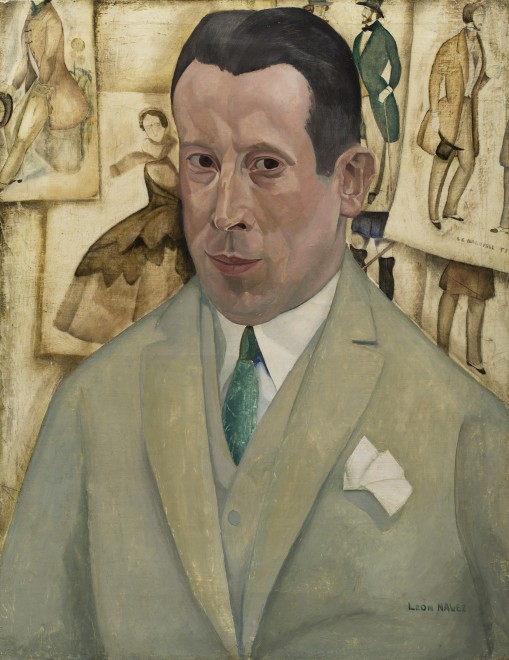Provenance
Collection of Gustave van Geluwe, until 2016
Literature
M. De Reymaeker, et al, Léon Navez: une Peinture de L’Âme,
Empain Solutions Graphiques, 2015, p. 173, illustrated.
Léon Navez (figs. 1a and b) was born in Mons, Belgium where he first studied before moving on
to the Académie Royale des Beaux-Arts in Brussels. There he took courses in decorative arts but
also pursued painting with Anto Carte, who was to be his mentor and friend. In 1924 Navez’s
talent was recognized as he won the Prix Godecharle, which allowed him to go to Paris where he
remained until 1928. In Paris he certainly became familiar with the developments of Cubism but
was also influenced by the work of Modigliani. Following his return home, Navez next won the
Belgian Prix de Rome, which in turn allowed him to spend time in Italy absorbing the influence of
Renaissance frescos by Giotto. On his return to Belgium, Navez split his time between teaching in
both Mons and Brussels. He was an active member of the Belgian art establishment and one of the
founding members in late 1928 of the Nervia Group of artists from the province of Hainaut. With
his colleagues in this group he created the official decorations for the 1935 Exposition Universelle
in Brussels. During the war years he assisted in the resistance. Late in his life in 1956 he visited
the Congo.
Navez pursued an essentially solitary, independent career, producing works – portraits, still-lifes,
landscapes, nudes, and genre - often classified as Neo-Classical in a stylized, decorative manner.
Already at a sale of one of his paintings in 1930, he was described as an “Artiste penseur et
anallyste raffiné,” both “an artist en vogue” and “a painter with a fine future.”1
His early work (fig. 2) shows a variety of influences from Cézanne and Cubism, but tempered by
the Belgian manner of his friend Carte (fig 3.). Works produced in the mid-1920s in Paris, like his
The Ages of Women (1924, fig. 4), Mother and Child (1925, fig. 5), and Self-Portrait with Models
of 1926 (fig. 1a) reveal a further development. By the later 1920s he had evolved his spare style of
large empty spaces populated by Vermeer-like figures (fig. 6) but often with the surprising
addition of a nude, as also occurs in his La Toilette of 1935 (fig. 7).
The subject of this portrait, Gustave Van Geluwe (1881-1962), first established himself as a tailor
in Brussels in 1910 and eventually founded there a successful couture house. In addition to his
fashion business, he was also a distinguished art collector (figs. 8a-d) and focused especially on
the Belgian school with such well-known masters as Ensor and Permeke. But Van Geluwe also
amassed works by many of the younger contemporary Belgian painters. Like Helena Rubinstein,
he commissioned a number of portraits of himself from these artists. This dapper portrayal of him
looking out at the viewer with drawings of nineteenth-century fashions in the background was
painted by Léon Navez in 1925. Navez, based at this time in Paris, did a number of paintings that
reflect an interest in fashion (figs. 9 and 10). Later depictions of himself that Van Geluwe
commissioned are a more full-length oil of 1946 (fig. 11) by Jean Brusselmans (1884-1953);2 a
very colorful, less staid portrait (fig. 12) by Henri François Raemaeker, known as Ramah, (1887-
1947);3 and a 1955 treatment by Serge Creuz (1924-1996, fig. 13).4
The plain directness of Navez’s 1925 Portrait of Gustave Van Geluwe is oddly reminiscent of the
realistic portraits being produced at just this time by the German painters of the Neue Sachlichkeit
(New Objectivity). Although he did not visit Germany, it is certainly possible that while in Paris
Navez saw examples or reproductions of works by such leading artists of this movement as Otto
Dix, Christian Schad, and Rudolf Schlichter (figs. 14-18). Navez never followed these painters in
their extreme departure into Expressionism or caricature, but instead remained faithful to his
modest Belgian roots, continuing to produce his own unique, often haunting, poetic portraits (figs.
19-20).
